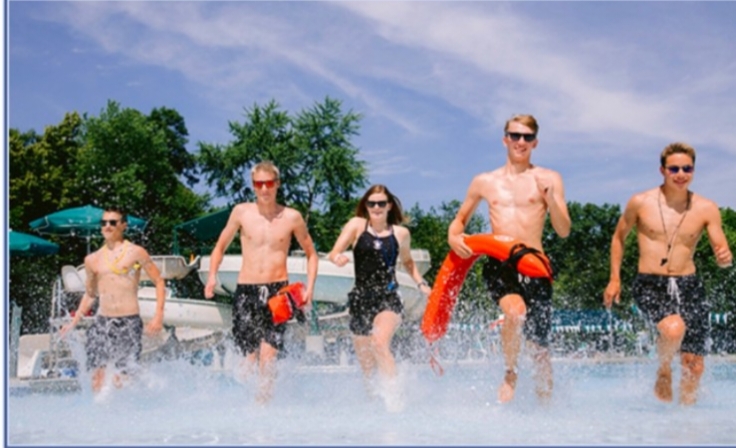Lifeguarding is a profession that holds paramount importance in ensuring the safety and well-being of individuals engaging in aquatic activities. The role of a lifeguard extends far beyond just monitoring swimmers; it involves a deep understanding of water safety, rescue techniques, emergency response protocols, and maintaining physical and mental fitness.
Fitness Requirements for Lifeguards
The physical requests put on lifeguards require an elevated degree of fitness. Lifeguards should have amazing cardiovascular perseverance, strength, flexibility, and mental keenness to play out their duties successfully. These fitness parts are vital for answering emergencies as well as for keeping up with vigilance and preparation all through extended periods of reconnaissance.
Cardiovascular Fitness
Cardiovascular fitness is a cornerstone of lifeguarding. Activities such as swimming laps, running, and cycling are integral parts of a lifeguard’s training regimen. These exercises not only enhance stamina but also improve lung capacity and overall cardiovascular health, enabling lifeguards to respond swiftly and decisively during emergencies.
Strength Training
Strength training is fundamental for lifeguards as it improves strong strength, power, and perseverance. Exercises like squats, rushes, push-ups, and weightlifting assist with building the strength expected for performing water salvages, completing first aid methods, and keeping up with control in testing circumstances.
Flexibility Exercises
Flexibility is one more key part of a lifeguard’s fitness schedule. Extending exercises, yoga, and versatility drills work on joint flexibility, scope of movement, and readiness. This flexibility is urgent for executing swift and exact developments during salvages, exploring changed territory, and preventing injuries.
Hydration and Nutrition
Legitimate hydration and nutrition are fundamental for lifeguards to support their energy levels and mental concentration. Lifeguards should focus on drinking a sufficient measure of water all through their shifts and polishing off adjusted dinners plentiful in lean proteins, healthy fats, complex starches, nutrients, and minerals.
Mental Fitness
Notwithstanding physical fitness, lifeguards should keep up with mental fitness and resilience. The capacity to keep on track, quiet under pressure, and make fast, quality decisions is paramount. Lifeguards frequently take part in mental training techniques like perception, care, and stress management to improve their mental grit.
Lifeguard training and Certification
Turning into a certified lifeguard requires thorough training and certification from certify associations. Lifeguard training near me and you cover many subjects including water salvage techniques, CPR, first aid, emergency reaction conventions, risk evaluation, communication skills, and legitimate responsibilities.
Persistent Training and Improvement
Lifeguards undergo persistent training and skill improvement to remain refreshed with the most recent safety norms, mechanical headways, and best practices in lifeguarding. Ordinary training meetings, mock drills, situation based exercises, and proceeding with education courses are fundamental for keeping up with capability and status.
Equipment Familiarity
Lifeguards should be capable in utilizing an assortment of salvage equipment, for example, salvage tubes, backboards, AEDs (Automated External Defibrillators), first aid units, and communication gadgets. Knowledge of equipment ensures lifeguards can successfully and proficiently perform safeguards and give quick clinical help when required.
Teamwork and Communication
Compelling teamwork and clear communication are crucial parts of lifeguarding. Lifeguards work cooperatively with their team individuals, office staff, emergency responders, and the public to ensure an organized reaction to emergencies, convenient data sharing, and consistent tasks.
Emergency Reaction Conventions
Lifeguards are prepared in comprehensive emergency reaction conventions. These conventions incorporate surveying what is going on, initiating emergency administrations, performing water salvages, directing CPR and first aid, overseeing spinal injuries, planning clearings, and recording incidents precisely.
Public Education and Safety
Lifeguards play an essential role in teaching the public about water safety practices, rules, and guidelines. They direct swim examples, water safety studios, and outreach programs to bring issues to light, advance responsible way of behaving, forestall accidents, and encourage a culture of safety in aquatic conditions.
It is an important aspect of beaching that you should take responsibility to play your role in keeping the beaches tidy. In a recent article in Washington Post same thing has been stressed upon and some water safety experts are also saying that in that article including national spokesperson of American Lifeguard Association.
The Role of the American Lifeguard Association
The American Lifeguard Association (ALA) is an unmistakable association that sets industry principles, rules, and best practices for lifeguarding. The ALA offers lifeguard certification programs, lifeguard training assets, professional improvement opportunities, and promotion drives to help lifeguards and ensure top notch lifeguard administrations the country over.
Conclusion
Lifeguarding includes a diverse exhibit of responsibilities, skills, and information regions. Lifeguards are gatekeepers of aquatic safety as well as ambassadors of public health, health, and education. Through thorough training, constant learning, physical fitness, mental resilience, compelling teamwork, and community commitment, lifeguards maintain the best expectations of professionalism, readiness, and administration greatness in protecting lives and advancing water safety for all.






